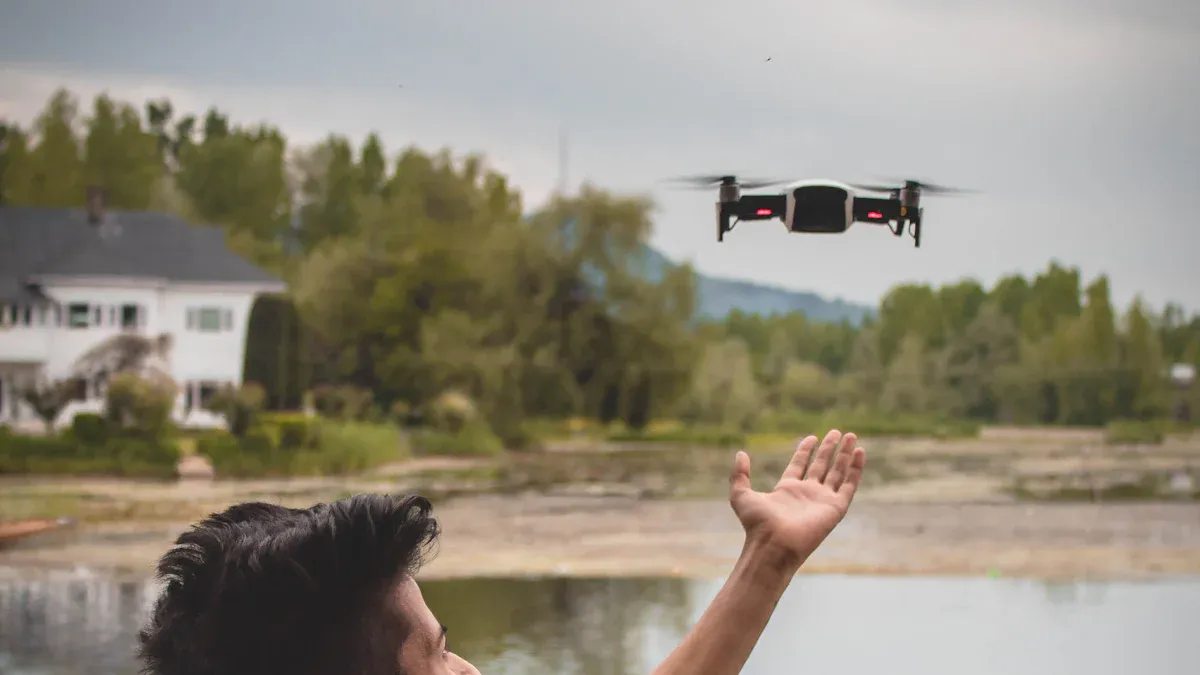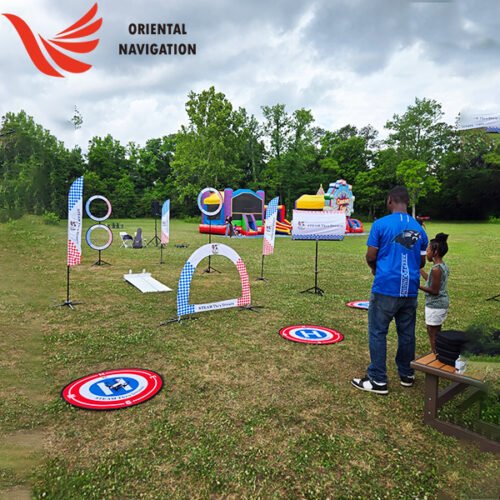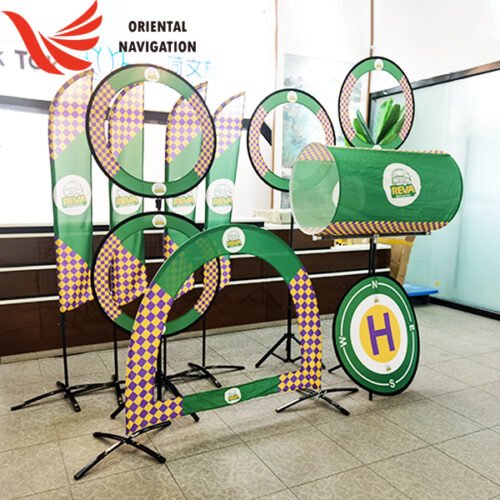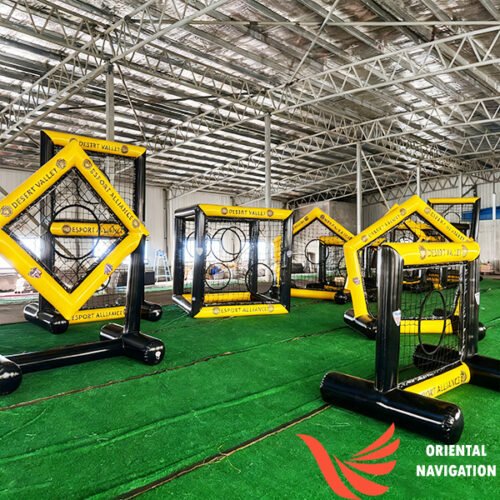Image Source: pexels
Learning to fly a drone feels like gaining a cool new skill. It mixes technology with creativity. Start by learning the controls. Use a simulator to practice and build memory for movements. This helps you avoid mistakes and feel more confident.
Flying drones has become very popular over time. For example:
- The number of drones sold worldwide may grow from 8.2 million in 2024 to almost 9.5 million by 2029.
After learning the basics, you can try fun activities like drone soccer. This game mixes flying excitement with teamwork, just like soccer. Soccer drones are also useful for training or watching areas, making them both helpful and fun.
Key Takeaways
- Begin learning to fly drones by understanding the controls. Practice safely using a simulator to gain confidence.
- Pick easy-to-use drones with helpful features like altitude hold. Companies like DJI and Holy Stone make good beginner drones.
- Always learn the local drone rules before flying. Use apps like B4UFLY to stay safe and follow laws.
- Practice often to get better at flying. Start with simple goals and slowly try harder tricks.
- Try fun games like drone soccer. This game builds teamwork and teaches important STEM skills.
Understanding the Basics of Drone Flying
Getting to Know Drone Controls
Learning to fly a drone starts with knowing how it moves. Most drones use a remote with two joysticks. The left joystick changes height and turns the drone. The right joystick moves it forward, backward, left, or right. Practice each movement one at a time to get better.
Beginner drones often have features like altitude hold and headless mode. These tools make flying easier by keeping the drone steady. Try using these features to see how they work.
Tip: Begin with slow movements to stay in control. Go faster as you feel more comfortable.
Important Drone Terms for Beginners
Before flying, learn some key drone words. These terms help you follow instructions and fix problems:
- Throttle: Changes how high the drone goes.
- Yaw: Turns the drone left or right.
- Pitch: Moves the drone forward or backward.
- Roll: Slides the drone sideways.
- FPV (First-Person View): Shows what the drone sees through its camera.
Knowing these terms helps you talk with other drone flyers or take lessons. Hobby drone pilots also need to pass a test like the TRUST exam. This test teaches safety rules, which are important for flying responsibly.
Using a Simulator Before Flying Outside
Simulators are great for learning to fly drones. FPV simulators let you practice safely without breaking your drone. They teach basic skills and save money by avoiding crashes.
Simulators feel real and show different flying situations. You can practice dodging obstacles, landing smoothly, and flying in windy weather. This practice makes you more confident and reduces accidents outdoors.
Drone Pilot Ground School programs also offer lessons to build your knowledge. These courses teach FAA rules and advanced flying tips. Combining simulator practice with lessons gives you a strong start in flying drones.
Note: Use a simulator for 15–30 minutes daily to improve fast.
Picking the Right Drone and Gear
Top Drones for Beginners
Picking a good drone makes learning easier. Beginner drones are simple, tough, and affordable. Brands like DJI, Holy Stone, and Parrot have great beginner options.
Here’s a quick comparison of beginner drones:
- Flight Time: The DJI Flip flies for 31 minutes with a 14 km range. The DJI Neo flies for 18 minutes with a 7 km range.
- Camera Quality: The Flip has a 1/1.3-inch sensor and 4K video at 60fps. The Neo has a smaller 1/2-inch sensor and 4K video at 30fps.
- Battery Power: The Flip’s battery lasts longer, perfect for longer flights.
- Ease of Use: The Flip has AI tracking and a stable 3-axis gimbal. The Neo is simpler to use for beginners.
Tip: Choose drones with easy controls and safety features. Holy Stone drones are cheap and beginner-friendly.
Must-Have Accessories for New Drone Flyers
Accessories make flying better and protect your drone. Here are some important ones:
- Extra Batteries: Fly longer without stopping.
- Propeller Guards: Protect your drone from crashes.
- Carrying Case: Keep your drone safe while traveling.
- Landing Pad: Keep dirt away during takeoff and landing.
- FPV Goggles: See what your drone sees for a fun experience.
These tools help keep your drone safe and improve your flying skills.
Budget Tips for First-Time Buyers
Your budget matters when buying your first drone. Beginner drones usually cost $100 to $500. DJI and Holy Stone offer good, affordable drones.
Here’s a look at high-end drone prices:
| Product | Base Price | 170% Tariff Added | Final Price |
|---|---|---|---|
| DJI Matrice 4T Worry-Free Plus Combo | $12,958.00 | +$22,028.60 | $34,986.60 |
| DJI Mavic 3 Enterprise Bundle | $6,928.00 | +$11,777.60 | $18,705.60 |
| DJI Matrice 30T Quadcopter with Care | $17,399.00 | +$30,578.30 | $46,977.30 |
These drones are expensive, but beginner drones like the DJI Mini series or Holy Stone HS720E cost under $500 and are great for new pilots.
Note: Stick to your budget and pick features you need. Don’t spend too much on advanced drones if you’re just starting out.
Safety Tips and Regulations for Drone Flying
Understanding Local Drone Laws and Regulations
Knowing drone rules is very important. Each place has its own laws to keep everyone safe. In the U.S., the FAA limits drones to 400 feet high. Breaking this rule can get you in trouble.
Here’s a table showing how often people follow FAA rules:
| Year | Total Violations | FAA 400 ft Violations | Percentage of 400 ft Violations |
|---|---|---|---|
| 2023 | 1,067,112 | 678,095 | 63% |
| 2024 | 900,000 (projected) | N/A | N/A |
Always check local rules before flying. Some places ban drones near airports, government sites, or big events. Following these rules keeps everyone safe and avoids fines.
Tip: Use apps like B4UFLY to see where drones are allowed.
Tips for Safe Flying in Public Spaces
Flying in public needs extra care. Some people might feel nervous around drones. Be sure to fly safely and respect others. Studies suggest learning how people react to drones. Designing drones for different uses can also help safety.
Here are some helpful tips:
- Fly a quiet drone to avoid bothering people.
- Stay far from people, animals, and buildings.
- Add bright lights to make your drone easy to see.
NASA and the FAA are working on ways to let drones fly farther. This research helps with rescue missions and public safety. These changes will make drones safer for everyone.
Note: Always keep your drone in sight unless you have special permission.
Avoiding Common Safety Mistakes
Mistakes happen, but you can prepare to avoid them. Flying in bad weather is risky. Strong winds or rain can break your drone. Ignoring low batteries can also cause crashes.
Follow these safety tips:
- Check the weather before flying.
- Look over your drone for damage before use.
- Bring extra batteries to avoid sudden stops.
New research is creating safer ways for drones to share airspace. By following these tips, you can enjoy safe and fun flights.
Alert: Never fly near emergency areas or during disasters unless allowed.
Overcoming Challenges as a Beginner
Handling Fear of Crashing
Being scared of crashing is normal for beginners. This fear comes from worrying about breaking your drone or paying for repairs. But you can beat this fear with simple steps.
Start by practicing in safe places. Use a simulator to learn the controls before flying outside. Simulators let you make mistakes without harming your drone. Slowly trying real flights will help you feel more confident.
Pick a cheap drone for your first flights. These are easier and cheaper to fix or replace. This way, you can focus on learning without worrying about money.
Tip: Fly in open spaces like parks to avoid hitting things.
Fixing Common Technical Problems
Beginners often face technical issues while flying. Knowing how to fix these problems saves time and stress.
Here’s a table of common problems and fixes:
| Problem | Solution |
|---|---|
| GPS Problems | Use GPS tools to improve accuracy. |
| Blurry Images | Change camera settings for clearer pictures. |
| Weather Issues | Fly in good weather to avoid trouble. |
| Plan flights based on weather reports. |
Learning these fixes helps you handle problems better. Always read your drone manual for tips specific to your model.
Note: Clean your drone and update its software to avoid many issues.
Gaining Confidence with Practice
Confidence grows with practice. The more you fly, the better you’ll get. Start with easy moves like hovering and landing. Once you’re good at these, try harder tricks.
Set small goals for each practice. For example, aim to land on a spot or fly through an obstacle. Reaching these goals improves your skills and boosts confidence.
Practice in different conditions, like light wind or dim light. This prepares you for real-life flying. Over time, you’ll feel ready to handle new challenges.
Alert: Always check your flight area and plan before starting to fly.
Exploring Drone Soccer and Advanced Applications
Image Source: pexels
What is Drone Soccer?
Drone soccer is a fun sport where teams fly drones in cages. These drones act like “soccer balls” and score by flying through hoops. It mixes flying skills with soccer strategies. Playing in teams makes it exciting and builds teamwork.
Drone soccer is becoming popular worldwide. The World Air Sports Federation (FAI) supports it, including the first FAI World Drone Soccer Championships in 2025 in Shanghai. The sport also has a $1 million World Cup and will be part of the 2025 World Games. These events show its growing fame and how it might compete with drone racing.
Fun Fact: Drone soccer helps you learn aviation and programming skills.
Benefits of Drone Soccer for STEM Education
Drone soccer isn’t just a game; it’s great for learning STEM. It teaches science, technology, engineering, and math in a fun way. You can learn coding, teamwork, and how drones work. Many schools use it to teach real-world skills.
Building and fixing drones helps you understand aerodynamics and electronics. It also improves problem-solving and critical thinking. These skills are useful for jobs in technology and engineering.
Tip: Joining a drone soccer team makes STEM learning more fun.
Using Soccer Drones for Training and Surveillance
Soccer drones aren’t only for games; they’re useful for training and security. Coaches use them to study player moves and improve plans. Drones with cameras track players live, giving helpful data.
Here’s a table showing studies about soccer drones:
| Study | Focus | Key Findings |
|---|---|---|
| Huang et al. | Player tracking | Used object detection for better tracking results. |
| Scott et al. | Athlete detection | Created tools to track athletes using drone videos. |
| Li et al. | Event detection | Used AI to find events like goals and offsides. |
| Manzoor et al. | Multi-person tracking | Improved tracking in fast sports scenes. |
Soccer drones also help with surveillance. They can watch large areas and record clear videos, making them good for security tasks.
Alert: Always follow privacy rules when using drones for security.
Flying a drone means learning controls, practicing often, and staying safe. Each step helps you improve and feel more confident. Using simulators and beginner drones makes learning easier. Accessories like propeller guards and extra batteries make flying better.
Trying drone soccer can boost your skills even more. This game is fun and teaches teamwork and STEM skills. Research shows that smart drone paths, like Lissajous shapes, work well. Smaller E[T] values mean better designs for precise flying.
Learning to fly drones lets you be creative and work with others. It’s a fun and exciting mix of technology and new ideas.
FAQ
How can I start flying a drone?
Use a simulator to practice safely first. Simulators teach basic moves and prevent crashes. Once ready, fly a beginner drone in open spaces. This step-by-step method improves your skills.
What should beginners look for in a drone?
Choose drones with easy controls and safety features like altitude hold. Brands like DJI and Holy Stone have good beginner options. Pick models made for new pilots.
Is it safe to fly drones in public areas?
Yes, but follow safety rules. Stay away from people, animals, and buildings. Use apps like B4UFLY to check local rules. Respect privacy and avoid no-fly zones.
Can drones help with learning?
Yes! Drones teach STEM skills like coding and problem-solving. Fun activities like drone soccer make learning exciting. Many schools use drones for tech education.
How can I stop being scared of crashing a drone?
Practice with a simulator to feel safe. Start with a cheap, strong drone for early flights. Fly in open areas to avoid accidents. Practice often to build confidence.







